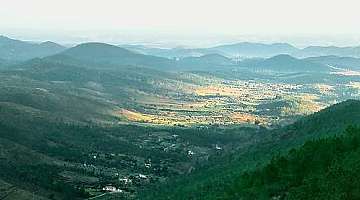Rural Houses Set to Get New House Signs

Rural Portugal
Published on
The Loulé Câmara has launched an innovative project aimed at helping locals, postmen and tourists have an easier time locating houses in the municipality. The project, which is part of the Mancha Branca (White Spot) program, will introduce standardized house name signs and post boxes in the houses from the town center to the rural areas. The standardization is also aimed at making public spaces in and around the town center aesthetically pleasing.
Owners of real estate properties are then strongly encouraged – nay, directed - to get on board the initiative. This is especially true for owners whose properties are difficult to find in the warren of alleys in the town proper and in the rural areas as well as owners who have made their own house name signs.
The standardized house name signs are approved by the town hall. As can be expected, these are made from the same material and designed with the same style, shape and size. Even their installation must be in accordance with the Câmara recommendations, thus, serving the purpose of attractive yet uniform house name signs.
The Câmara recommendations also include specific guidelines on where to place the signs. Suffice it to say that the signs including the postal boxes should not obstruct motor and pedestrian traffic as well as not damage the road. The property owners are responsible for putting up the signs, nonetheless.
In essence, only the signs will be changed but the rest must remain so as to preserve the charm of Loulé. It must be emphasized that the signs being replaced are not the signs on the exterior walls of the houses but are instead the signs placed at road junctions. These signs are designed to show visitors the way to the houses farther down the road.
Visitors to the city are well-advised to take maps with them. Yes, the must-see attractions in Loulé are in a relatively compact area but it pays to have a map just in case you find yourself walking farther than necessary.
The municipal council started the initiative several months ago with the removal of the signs at road junctions with the justification that these were “too messy”. The townspeople had mixed reactions but since the ordinance was already approved by the Câmara, it pushed through despite a few negative reviews. A quick walk around many of the municipality’s streets will reveal how many, if not most, of the old street and structure signs have been replaced by the new standardized signs.
The cost of the new house name signs have yet to be released. It is expected to be nominal but everything is still up in the air, cost-wise.
As for the approved mailboxes, residents, landlords and property owners can purchase these boxes from CTT stores. These must then be installed according to the Câmara’s guidelines – use the correct brackets and install in approved spaces, for example. It is still unclear what the Câmara intends to do in cases when the mailboxes are improperly installed.
The post office through its postmen will deliver the leaflets containing information about the initiative to rural areas. It should be noted that the postmen are seen as one of the primary beneficiaries of the initiative – to help them find addresses in an easier and faster manner, that is.
The municipality will also benefit, too. According to Mayor Seruca Emídio (PSD), the initiative will improve the city’s image including its rural areas.
The standardization of the house name signs is also in line with improvements to the city’s Safe Residence Programme (SRP). Basically, the standardized house name signs will help the police to quickly locate properties in rural areas especially those in isolated parts. The result: Faster response to crimes including residential robbery and domestic abuse.
Since the implementation of the SRP more than 2 years ago, the Safe Residence Program has helped in significantly slashing the emergency response times for rural residents as well as lessening the crime rate in the areas where it was implemented. Such is the success of the SRP that authorities are now planning to implement the program in the rest of Portugal. Revisions to account for local conditions will, of course, be considered during the planning stage.
The SRP started in January 2010 in Alfeição (Loulé) as a response to a spare of violent residential robberies with majority of foreigners as victims. In an area like Loulé in particular and the Algarve Region in general, keeping the peace and order is a top priority considering the area’s heavy reliance on the tourism industry.
The Mancha Branca project, on the other hand, has the support of public and private entities in Loulé including InfraQuinta, InfraMoura and InfraLobo. Its main goal was to revamp the form and function of public spaces that are in a state of deterioration due to the vagaries of weather and the damage of manmade activities.
http://www.portugalproperty.com - Portugal's Largest and most trusted real estate agency!
Published in: Guide to Portugal / Portugal Property